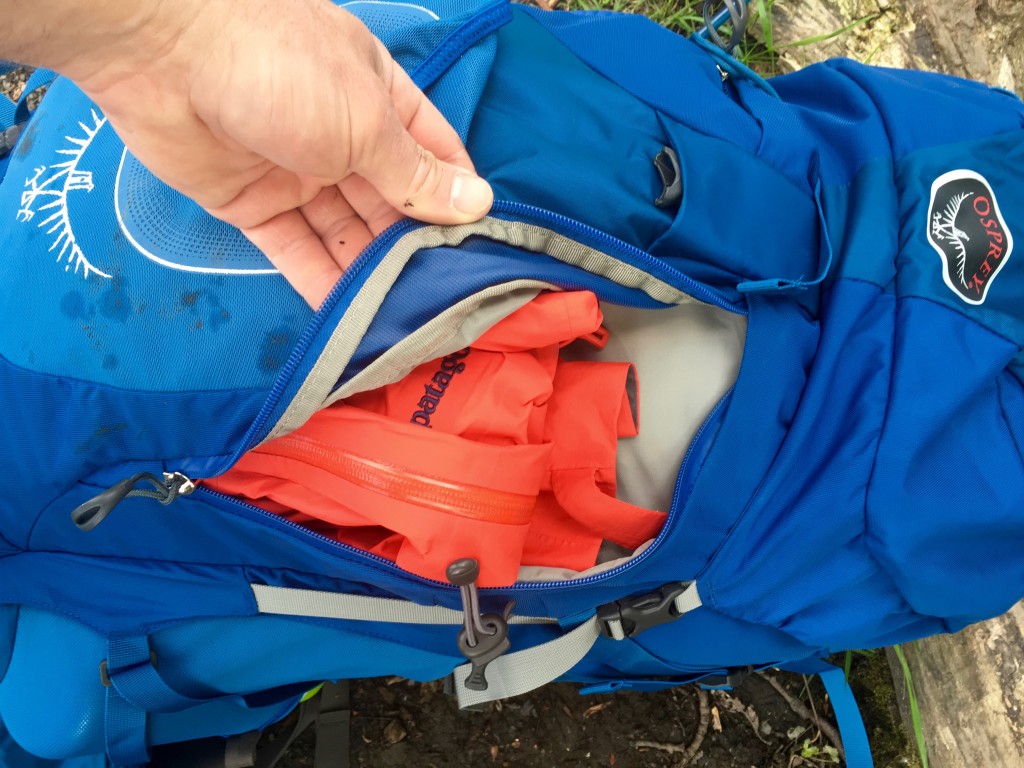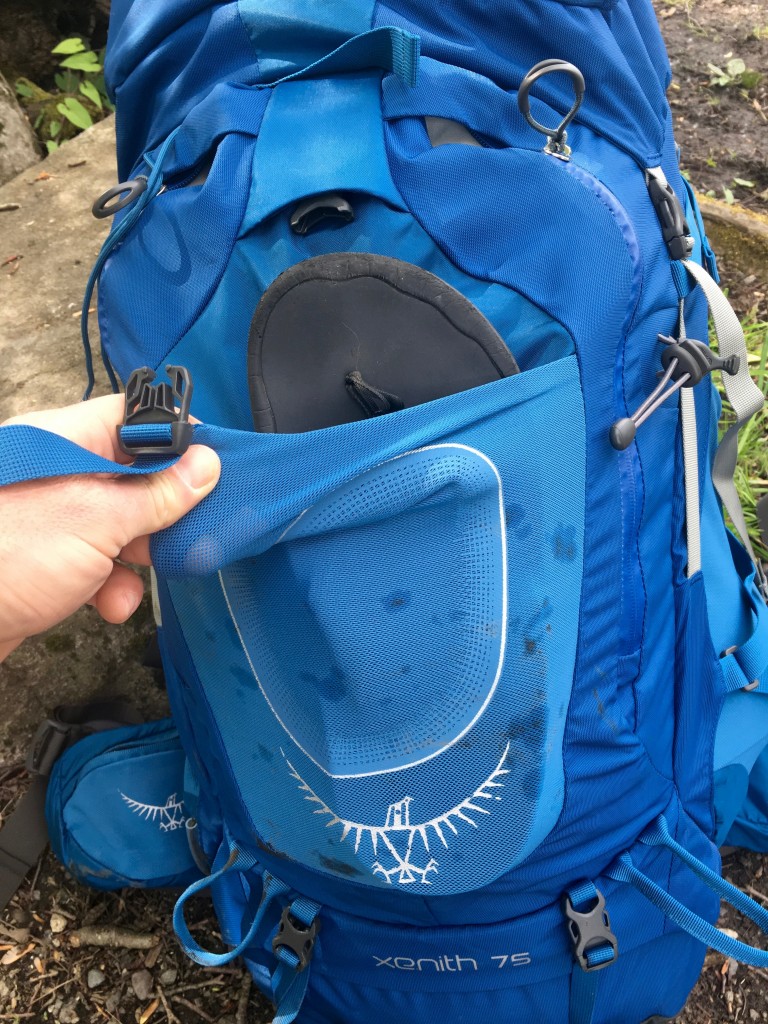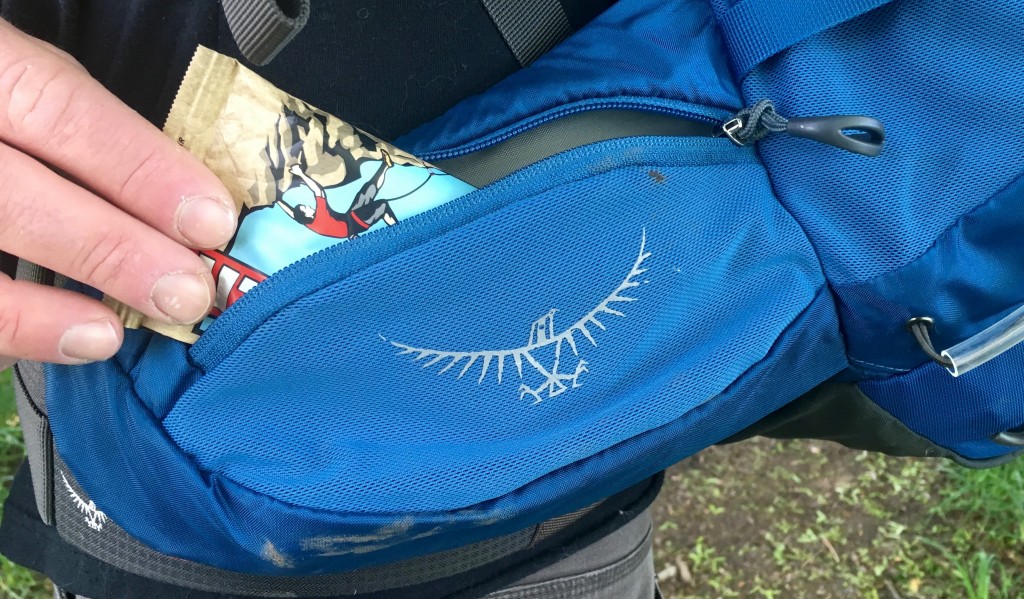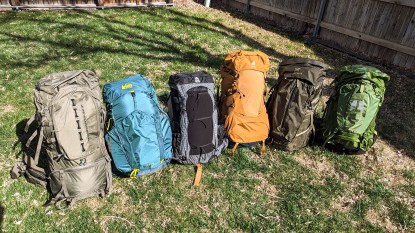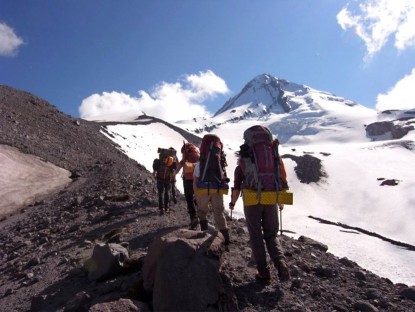Osprey Xenith 75 Review
Our Verdict
Our Analysis and Test Results
Hands-On Review of the Osprey Xenith 75
The Osprey Xenith is a top-notch pack for week-long trips (or longer) because of its comfort, suspension, and overall pack design. It has the padding and suspension to carry the weight for these types of extended and likely heavier laden trips, as well as an incredible feature set. This pack has our review staffs' favorite pocket designs, which help you stay organized, especially with the additional equipment and provisions you'll potentially have to manage.
If 75L just isn't going to cut it, Osprey also offers the Osprey Xenith 88. If that still isn't enough room for you the Osprey Xenith 105 is the largest pack in the Xenith family. Regardless of size, the Xenith pack series retains all the award winning qualities we tested for and are more-or-less same with only very slightly differences other than dimensions and subsequent volume (the 105L model does get a slightly larger diameter aluminum frame for anticipated heavier loads going from 3.5mm to 4mm). If you're looking for a monster pack with great gear hauling capabilities, the Xenith line of packs should do it for you.
Comfort
The Xenith 75 features high-quality foam that strikes an excellent balance of support, while still remaining soft enough to conform effectively to the user, spreading out the weight along the shoulder strap. This pack also comes equipped with well-designed and pleasantly articulated shoulder straps that helped our review staff determine that this was one of the most comfortable packs in our fleet.
The face fabric (the outside fabric) used on the straps was our consensus tester favorite for feeling the best while next to our skin. The shoulder straps and waist belt felt even more luxurious than many of the other award winners including another Top Pick winner, the Gregory Baltoro 65, or the other similar weight models like the Osprey Aether AG 60 though overall pretty comparable to the Editors' Choice award-winning Arc'teryx Bora AR 63.
The foam padding used on this pack's hip-belt and shoulder straps is top notch and there are few packs on the market that are more comfortable when carrying moderate to heavy loads (>40lbs). When compared to the other packs that we tested, this model is a little stiffer; this is better for heavier loads, but may be slightly overkill for shorter, less heavily laden trips.
The Xenith's hip belt is heat moldable, but after testing it both before and after the heat molding process, we don't think it makes a difference. We used this pack for 18 days on Denali with monster loads before heat molding and felt pretty much no difference afterward. That's not to say that getting it molded is bad, nor that we don't think the Xenith features a comfortable and supportive hip-belt. We just found that heat molding offered little in the way of making a significant difference for the user.
Weight
You don't buy the 5 pound 2 ounce Xenith 75 because it's the lightest pack, you buy it because it's a respectable weight and is MEGA comfortable, helping you manage extended trips like a champion. This model is similar in weight to the comparable Gregory Baltoro 65 (5 lbs 3 oz), but remains slightly heavier than most of the other options in our review. It is still lighter than the Deuter Air Contact 65 + 10 (6 lbs 3 oz), but remains around 8-12 ounces heavier than most packs in our review.
Suspension
The Xenith has one of the more robust suspensions among packs we tested, which resulted in it having the ability to carry heavier loads with ease. It features a combination of a more typical central aluminum stay along with 3.5mm LightWire peripheral frame that effectively transfers the load to the hip belt.
It carried moderate to heavier loads (45+ pounds or more) significantly better than most options out there, including our Top Pick for Comfort, the Osprey Atmos 65 AG. Compared with the higher scoring heavy load carriers, this contender performed very similarly to the Gregory Baltoro 65 and the Arc'teryx Bora AR 63, but the features and volume options on the Xenith are what made it our favorite option for extended outings.
Features and Ease Of Use
The Xenith offers a pretty nice balance of features and functionality while maintaining a respectable weight for a pack of its volume, while sporting such a robust suspension. Check out the chart below to see where the Xenith landed in the Ease of Use category.
Our testers absolutely love the dual zippered pockets on the front of the pack; these are easy to access even when the pack is super full and were big enough to fit something bigger than a 1L Nalgene. On top of the pockets, the stretchy mesh beaver-tail pocket is great for flipflops, a jacket you want to keep close by, or any other oddly shaped items. A cool and unique feature of this pack (and other Osprey packs) is the stretchy mesh water bottle pockets featured on either side of the pack, which easily fit a 1 liter Nalgene in a very secure traditional vertical orientation.
What's cool is that the pockets have a secondary hole, which allows the water bottle to also be oriented forward so the user can (fairly) easily access and stow their bottles without having to remove their pack. Not only were the mesh pockets big enough to fit a water bottle, but you could also stuff another item (like tent poles), which might be sharing the same pocket.
The ice axe loops are above average for functionality among other more backpacking-oriented options. The lower straps that extend over the sleeping bag compartment fit most closed cell foam pads, tripods, or other oblong items. Our testing team liked the dual zippered lid pockets, as they helped keep us organized on extended trips. While we utilized these pockets on every trip, we didn't think they were quite as easy to hunt for items in versus packs with zippers on the top of the lid rather than the side (like the Arcteryx Bora AR 63 or the Gregory Baltoro 65). We liked the hip belt pockets on this particular competitor and found them big enough for a camera, smartphone, or snacks that we wanted to have quick access to while hiking.
Adjustability and Fit
Using shoulder straps that are attached to a large Velcro flap, sandwiched inside the primary back panel, this pack offers around 4" of torso length adjustment. This simple system has been imitated by several other manufacturers and with good reason. This design allows the pack to truly be fine-tuned to the user and we have never felt it slip or slide out of adjustment unexpectedly.
Fit
This is one of the few pack models we tested, along with the Osprey models: the Osprey Aether AG 60 & 70 and Osprey Atmos 65 AG, that for users with backs lengths of around 19.5-21", we found it was more comfortable to go up to the larger size rather than stay with the medium size. Osprey recommends going with either length for users with a 20" torso; in our experience, and after talking with several shops and users, we'd say that 80% of folks are happier with the longer length when in between sizes on Osprey's torso length chart. We didn't notice much of a difference with lighter loads (under 40 lbs), but when we weighed the pack down for extended trips, we felt the longer length helped the pack carry better and thus ultimately was more comfortable.
Best Applications
This pack has become our OutdoorGearLab Testers' go to pack for extended trips and heavily laden excursions, including tester Ian Nicholson; this is his favorite Denali pack (a mountain he guides each year). This pack is best for folks who tend to gravitate toward more extended trips or just find themselves carrying a little extra equipment on backpacking or mountaineering endeavors. Because of its volume, it's not great for folks who primarily go on 1-2 night trips, as it will too easily let you overpack. You can easily find a pack that is a little lighter, but this model truly excels when you need to carry a lot of stuff.
This pack's 75L volume isn't a huge 75 and actually feels like it's a little smaller in volume than the Gregory Baltoro 75.
Value
At $350, this pack runs in the middle of the road. It still costs around $200 less than the $549 Arc'teryx Bora AR 63 and $50 more than the comparable Gregory Baltoro 65 ($300), though the comparably-volumed Baltoro 75 is $320. We think this one is completely worth it for extended trips where its more robust suspension, high-quality foam, and killer design are worth a little extra money.
Conclusion
The Osprey Xenith 75 is one of the most comfortable packs in our review; because of its robust design and larger volume, this competitor is best for folks who frequently go on extended trips or are the dedicated porter of their group. It's also worth noting that the Xenith features one of our review teams favorite overall feature sets and pack designs, making it one of the “easiest” models to use.



